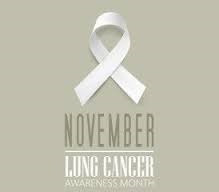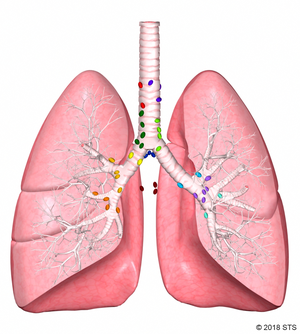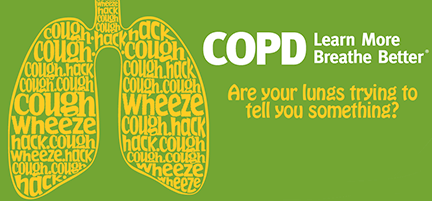- Enfermedades del Corazón en Adultos
- Enfermedad de la válvula aórtica
- Enfermedad de las Arterias Coronarias
- Enfermedades de la Válvula Mitral
- Enfermedad de la Válvula Tricúspide
- Trastornos del Ritmo Cardíaco
- Aneurisma de la Aorta Torácica
- Disección Aórtica
- El Dispositivo de Asistencia Ventricular Izquierdo (DAVI)
- Fibrilación Auricular (FA)
- OMEC VA
- La insuficiencia cardíaca
- Trasplante de corazón en adultos
Diseases of the arteries, valves, and aorta, as well as cardiac rhythm disturbances - Pediátrica y Cardiopatías Congénitas
- Comunicación interauricular
- Comunicación interventricular
- Tetralogía de Fallot
- Defecto del canal auriculoventricular
- Transposición de las grandes arterias
- Coartación de la aorta
- Tronco arterial común
- Defectos de ventrículo único
- Persistencia del conducto arterioso
- Trasplante de corazón en pacientes pediátricos
- Trasplante de pulmón en pacientes pediátricos
Heart abnormalities that are present at birth in children, as well as in adults - Pulmón, esófago, y otras enfermedades del pechoDiseases of the lung, esophagus, and chest wall
- ProceduresCommon surgical procedures of the heart, lungs, and esophagus
- Pre- y Post- Cuidado Operativo
- Antes de la cirugía de corazón
- El día de la cirugía de corazón
- Después de la cirugía de corazón
- Antes de la cirugía de cáncer de pulmón
- El día de la cirugía de cáncer de pulmón
- Luego de la cirugía para el cáncer de pulmón
- Antes de la cirugía para cardiopatías congénitas
- El día de la cirugía para cardiopatías congénitas
- Después de la cirugía para cardiopatías congénitas
How to prepare for and recover from your surgery

November is Lung Cancer Awareness Month and aims to get people talking about lung cancer, all in an effort to raise much-needed awareness.
Lung cancer is the leading cause of cancer death for both men and women in the US. Each year, more people die of lung cancer than of colon, breast, and prostate cancers combined.
The American Cancer Society (ACS) estimates that more than 228,150 Americans will be diagnosed with lung cancer this year, and approximately 143,000 lung cancer patients will die.
But there is new hope, according to the International Association for the Study of Lung Cancer (IASLC). The research, diagnosis, and treatment breakthroughs in the last 10 years offer patients and their families a better outlook. Lung cancer screening programs offer new promise for early detection and improving survival rates. As many as 12,000 to 15,000 lives can be saved each year through these screening programs. For more information about lung cancer screening, read Dr. Doug Wood’s blog article.
Symptoms
According to the American Lung Association (ALA), many people with lung cancer don’t have symptoms until the disease is in its later stages. Symptoms are different in each person, and may include:
- A cough that doesn’t go away and gets worse over time
- A chronic cough or “smoker’s cough”
- Hoarseness
- Constant chest pain
- Shortness of breath or wheezing
- Frequent lung infections such as bronchitis or pneumonia
- Coughing up blood
Some symptoms of lung cancer may not seem related to the lungs or breathing, but may still be a sign of lung cancer. These symptoms include:
- Weight loss
- Loss of appetite
- Headaches
- Bone pain or fractures
- Blood clots
See your doctor right away if you notice any of these symptoms.
Protection and Prevention
Breathing about 25,000 times and inhaling approximately 2,400 gallons of air every day, the lungs are the only internal organ in constant contact with the environment outside the body; so it’s especially important to protect your lungs.

• Stop smoking: Cigarette smoking is the number one lung cancer risk factor. Don’t start smoking; quit smoking if you smoke; and avoid secondhand smoke.
• Be mindful of air pollution: Breathing in dangerous chemicals can cause lung cancer. The more chemicals you breathe in, the higher your lung cancer risk.
• Exercise: Daily aerobic exercise and breathing exercises are ways you can “work out” your lungs to their full capacity.
• Get checked regularly: Seek medical help on a regular basis to address any medical concerns or questions you might have.
If you think you are at risk for lung cancer, talk to your doctor about being screened.
American Diabetes Month is a time to raise awareness about the growing public health crisis of diabetes and to encourage people to make healthy changes.
Every 23 seconds, someone in the US is diagnosed with diabetes, which translates into approximately 30 million children and adults who have diabetes; nearly 95% have type 2 diabetes. Another 84 million adults in the US are at high risk of developing type 2 diabetes.
Diabetes is one of the leading causes of disability and death in the US; and if not controlled, may result in health problems such as stroke, kidney disease, vision loss, and amputation. Heart disease can also be a serious health problem for people with diabetes.
According to the American Diabetes Association (ADA), the following symptoms of diabetes are typical. However, some people with type 2 diabetes have symptoms so mild that they may go unnoticed.
- Urinating often
- Feeling very thirsty
- Feeling very hungry - even though you are eating
- Extreme fatigue
- Blurry vision
- Cuts/bruises that are slow to heal
- Weight loss - even though you are eating more (type 1)
- Tingling, pain, or numbness in the hands/feet (type 2)
Early detection and treatment of diabetes can decrease the risk of developing the complications associated with diabetes. Ask your doctor about your risk of diabetes.
National COPD Awareness Month brings special attention to chronic obstructive pulmonary disease—more comonly known as COPD—a lung disease that makes it hard to breathe.
COPD, which includes chronic bronchitis and emphysema, is the third leading cause of death in the US. The disease often develops slowly and gets worse over time. The leading cause of COPD is cigarette smoking, but long-term exposure to other lung irritants, such as air pollution, chemical fumes, or dust, also may contribute to COPD. COPD can cause coughing that produces large amounts of mucus, wheezing, shortness of breath, and chest tightness.

While an estimated 15 million Americans suffer from COPD, several additional millions likely have COPD and don’t even know it. There is no cure yet, but there are ways to help people get diagnosed earlier so that COPD can be managed better. According to the National Heart, Lung, and Blood Institute (NHLBI), by taking these steps, you can make a healthy difference:
Know the basics: COPD permanently damages the airways and air sacs in the lungs. They lose elasticity and cannot “bounce back” into shape after each breath inhaled stretches them to fill with air. The airways can also become swollen or thicker than normal and become blocked or obstructed by increased mucus, making it even harder to exhale.
Get some background: COPD most often occurs in people age 40+ who:
- Are or were smokers. While smoking is the most common cause, as many as one in six people with COPD never smoked.
- Have had long-term exposure to lung irritants, such as certain workplace chemicals, dust or fumes, as well as to air pollutants, like secondhand smoke.
- Have a rare genetic condition. It is estimated that close to 100,000 Americans have alpha-1 antitrypsin, or AAT, deficiency. They can get COPD even if they never smoked or were exposed to irritants or air pollutants.
Notice signs and symptoms: COPD comes on gradually and worsens over a number of years. People get so used to living with COPD, they aren’t always aware of their symptoms and how the disease limits their quality of life and ability to do things. You can help by looking and listening for these symptoms:
- Constant coughing, sometimes called “smoker’s cough”
- Shortness of breath while doing everyday activities, such as light housework, taking a walk or even getting dressed
- Frequent respiratory infections
- Not able to take a deep breath
- Blueness of the lips or fingernail beds (cyanosis)
- Fatigue
- Producing a lot of mucus (also called phlegm or sputum)
- Wheezing
Start the conversation: As soon as you notice signs and symptoms, make an appointment with a health care provider. Remember, the sooner COPD is diagnosed, the better you’ll be able to breathe and live.
Make the most of a doctor’s visit: Before the appointment, make a list of all breathing symptoms, as well as activities no longer possible because of shortness of breath. Share these with your doctor.

The Great American Smokeout is November 18.
The Smokeout—sponsored by the American Cancer Society—encourages the more than 32 million smokers in the US to stop smoking cigarettes for 24 hours or to use the day to make a quit plan.
Why Should I Quit Smoking?
According to SmokeFree.Gov, quitting smoking can help most of the major parts of your body, such as:
- Quitting smoking can re-wire your brain and help break the cycle of addiction.
- Smoking is the leading cause of heart attacks and heart disease. But many of these heart risks can be reversed simply by quitting smoking. Quitting can lower your blood pressure and heart rate almost immediately. Your risk of a heart attack declines within 24 hours.
- When you quit smoking, your blood will become thinner and less likely to form dangerous blood clots. Your heart will also have less work to do, because it will be able to move the blood around your body more easily.
- Quitting smoking will not get rid of the fatty deposits that are already there. But it will lower the levels of cholesterol and fats circulating in your blood, which will help to slow the buildup of new fatty deposits in your arteries.
- Scarring of the lungs is not reversible. That is why it is important to quit smoking before you do permanent damage to your lungs. Within two weeks of quitting, you might notice it’s easier to walk up the stairs because you may be less short of breath. Don’t wait until later; quit today!
- There is no cure for emphysema. But quitting when you are young, before you have done years of damage to the delicate air sacs in your lungs, will help protect you from developing emphysema later.
- Quitting smoking will prevent new DNA damage from happening and can even help repair the damage that has already been done. Quitting smoking immediately is the best way to lower your risk of getting cancer.
A Quit Plan
Quitting smoking can be hard, so a good plan can make all the difference. The US Centers for Disease Control and Prevention (CDC) suggests:
- Set a quit date. Choose the Great American Smokeout or another quit day within the next 2 weeks.
- Tell your family and friends about your quit plan. Share your quit date with the important people in your life and ask for support. A daily phone call, e-mail, or text message can help you stay on course and provide moral support.
- Be prepared for challenges. The urge to smoke is short—usually only 3 to 5 minutes. Even one puff can feed a craving and make it stronger. So be ready with healthy ways to cope with urges: Drink water; Take a walk or ride your bike; Listen to a favorite song or play a game; Call or text a friend.
- Remove cigarettes and other tobacco from your home, car, and workplace. Throw away your cigarettes, matches, lighters, and ashtrays. Clean and freshen your car, home, and workplace. Old cigarette odors can cause cravings.
- Talk to your pharmacist, doctor, or quitline coach about quit options. Nicotine patches, gum, or other approved quit medication can help with cravings.
Help!
Free help is available at 1-800-QUIT-NOW (1-800-784-8669) and at 1-855-DÉJELO-YA (1-855-335-3569) (for Spanish speakers). Or, get 24/7 help with a Smokefree app for your smartphone: quitSTART and QuitGuide are two good options.
Douglas E. Wood, MD, provides advice for quitting smoking. Watch the video.

